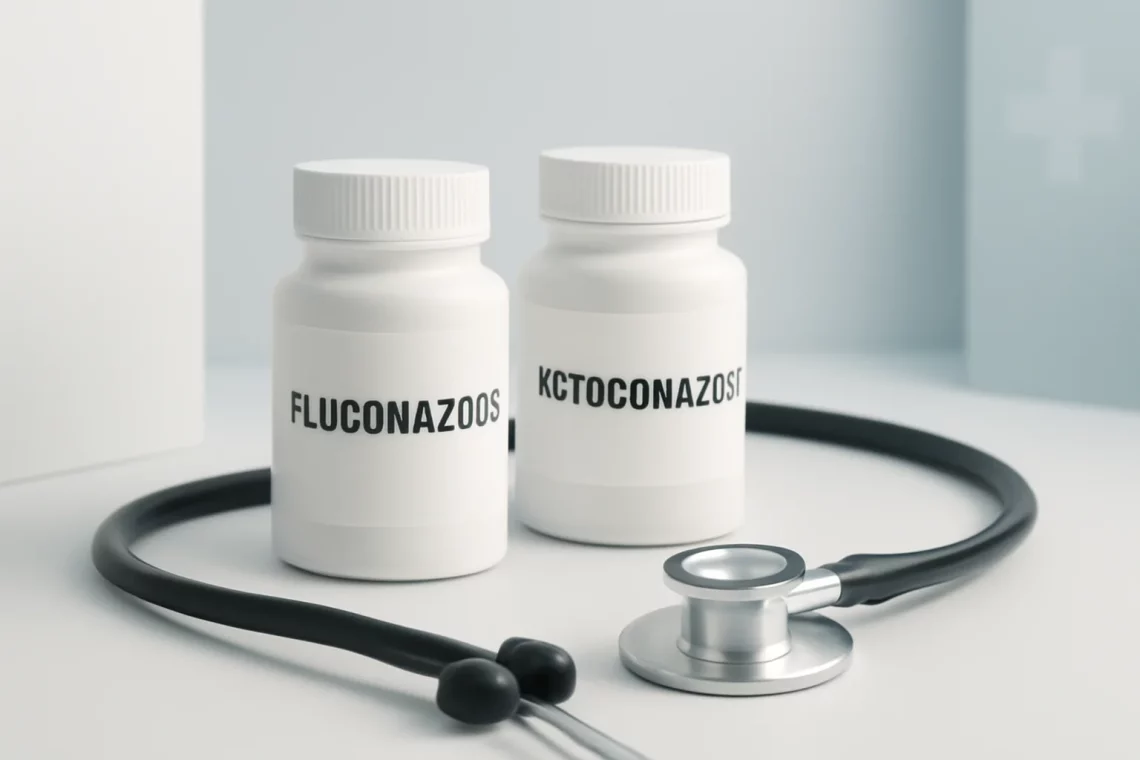-
Ondansetron vs Metoclopramide: Choosing the Right Antiemetic Solution
Ondansetron and Metoclopramide are two medications commonly used to manage nausea and vomiting, conditions that can arise from various causes including chemotherapy, surgery, and gastrointestinal disorders. Both drugs serve important roles in clinical practice, yet they operate through different mechanisms of action and have unique side effect profiles. Understanding their differences, indications, and effectiveness is crucial for healthcare providers and patients alike. Nausea and vomiting can significantly impact a person’s quality of life, making effective treatment essential. Ondansetron, a selective serotonin 5-HT3 receptor antagonist, primarily works by blocking the action of serotonin, a neurotransmitter that can trigger nausea. On the other hand, Metoclopramide is a dopamine receptor antagonist that also…
-
Entresto vs Carvedilol: A Comprehensive Comparison for Heart Health
Entresto and Carvedilol are two medications commonly used in the management of heart-related conditions, particularly heart failure. Both drugs, while serving similar purposes, have distinct mechanisms of action and therapeutic effects. As heart disease remains one of the leading health issues globally, understanding the nuances between these two medications can be crucial for patients and healthcare providers alike. Entresto, a combination of sacubitril and valsartan, is a relatively newer medication that has gained attention for its ability to reduce hospitalizations and improve outcomes in patients with heart failure with reduced ejection fraction. On the other hand, Carvedilol, a non-selective beta-blocker with alpha-blocking properties, has been a staple in heart failure…
-
Azithromycin vs Clindamycin: Key Differences and Uses Explained
Azithromycin and clindamycin are two widely used antibiotics that play a crucial role in treating various bacterial infections. Though they belong to different classes of antibiotics and have distinct mechanisms of action, both are effective in their respective applications. Understanding the differences and similarities between these two medications is essential for healthcare professionals and patients alike. This knowledge can help in selecting the right antibiotic based on the type of infection, the patient’s medical history, and potential drug interactions. Antibiotics like azithromycin and clindamycin work by inhibiting bacterial growth, but they do so in different ways. Azithromycin is a macrolide antibiotic, while clindamycin belongs to the lincosamide class. Each antibiotic…
-
Fentanyl vs Tapentadol: Key Differences and Comparisons Explained
Fentanyl and tapentadol are two powerful medications often used in pain management, but they differ significantly in their composition, mechanisms of action, and clinical applications. Understanding these differences is crucial for patients, healthcare providers, and anyone involved in pain management. Fentanyl is a synthetic opioid that is typically prescribed for severe pain, particularly in patients who are tolerant to other opioids. It is known for its potency and rapid onset of action, making it a go-to choice in acute pain scenarios, such as post-surgical recovery or cancer-related pain. On the other hand, tapentadol is a relatively newer medication that combines two mechanisms of action: it acts as an opioid analgesic…
-
Entresto vs Candesartan: Which Heart Failure Treatment Is Better?
Managing cardiovascular health is crucial for overall well-being, and a range of medications are available to help individuals manage conditions such as hypertension and heart failure. Among these medications, Entresto and Candesartan have gained prominence for their effectiveness in treating heart-related issues. Both of these drugs are designed to lower blood pressure and reduce the strain on the heart, but they work in different ways and have distinct profiles. Entresto, a combination of sacubitril and valsartan, operates by inhibiting a specific enzyme that breaks down natriuretic peptides, which are hormones that help regulate blood pressure and fluid balance. This dual action not only lowers blood pressure but also offers additional…
-
Fluconazole vs Ketoconazole: Which Antifungal Treatment Is Better?
Fluconazole and ketoconazole are two antifungal medications widely used in the treatment of various fungal infections. They belong to a class of drugs known as azoles, which work by inhibiting the synthesis of ergosterol, an essential component of fungal cell membranes. This disruption leads to the weakening and eventual death of the fungus. While both medications are effective in treating a range of fungal infections, they differ in terms of their spectrum of activity, pharmacokinetics, and clinical applications. Understanding these differences can help healthcare providers make informed decisions when prescribing antifungal therapies. As the prevalence of fungal infections continues to rise, particularly among immunocompromised individuals, the choice between fluconazole and…
-
Cyclobenzaprine vs Tizanidine: Key Differences and Uses Explained
Cyclobenzaprine and tizanidine are two medications commonly prescribed to manage muscle spasms and associated discomfort. Both belong to the category of muscle relaxants but differ significantly in their mechanisms of action, indications, and side effects. Understanding these differences is crucial for healthcare providers and patients alike, as it can influence treatment choices and outcomes. Cyclobenzaprine is primarily used for short-term relief of muscle spasms, often resulting from acute musculoskeletal conditions. It works by acting on the central nervous system, helping to reduce muscle tightness and discomfort. On the other hand, tizanidine operates differently by acting as an alpha-2 adrenergic agonist, which decreases spasticity by inhibiting the release of excitatory neurotransmitters.…
-
Naltrexone vs Suboxone: Understanding the Key Differences and Benefits
Naltrexone and Suboxone are two medications commonly used in the treatment of substance use disorders, particularly opioid dependence. As the opioid crisis continues to affect countless individuals and communities, understanding the distinctions between these medications becomes increasingly important. Both Naltrexone and Suboxone serve unique roles in the recovery process, yet they operate through different mechanisms and have varying applications. Naltrexone is an opioid antagonist, meaning it blocks the effects of opioids at their receptor sites, thereby reducing cravings and the potential for relapse. In contrast, Suboxone is a combination of buprenorphine, a partial opioid agonist, and naloxone, which helps prevent misuse. This combination not only alleviates withdrawal symptoms but also…
-
Lisinopril vs Fosinopril: Which ACE Inhibitor Is Right for You?
Lisinopril and fosinopril are both medications belonging to a class known as angiotensin-converting enzyme (ACE) inhibitors. These drugs are primarily used to manage high blood pressure, but they also play a crucial role in treating heart failure and other cardiovascular conditions. As our understanding of hypertension and heart health has evolved, so too has the development of medications designed to effectively control these issues. The need for effective management of cardiovascular health has never been more critical, given the rising prevalence of hypertension across the globe. Understanding the differences and similarities between medications like lisinopril and fosinopril can empower patients to make informed choices about their treatment options. Both medications…
-
Naltrexone vs Buprenorphine: Understanding Their Differences and Uses
Naltrexone and buprenorphine are two medications that have gained attention in the field of addiction treatment and pain management. Both drugs operate on the brain’s opioid receptors but do so in markedly different ways. Understanding these differences is crucial for healthcare providers, patients, and families navigating the complex landscape of opioid use disorder and chronic pain management. Naltrexone is primarily known for its role in treating alcohol and opioid dependence, as it can block the euphoric effects of these substances, thereby reducing cravings. On the other hand, buprenorphine is a partial opioid agonist that can alleviate withdrawal symptoms and cravings without producing the intense high associated with full agonists. This…






































